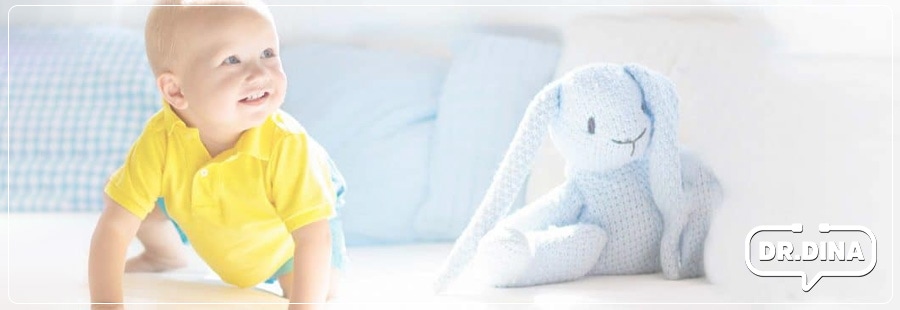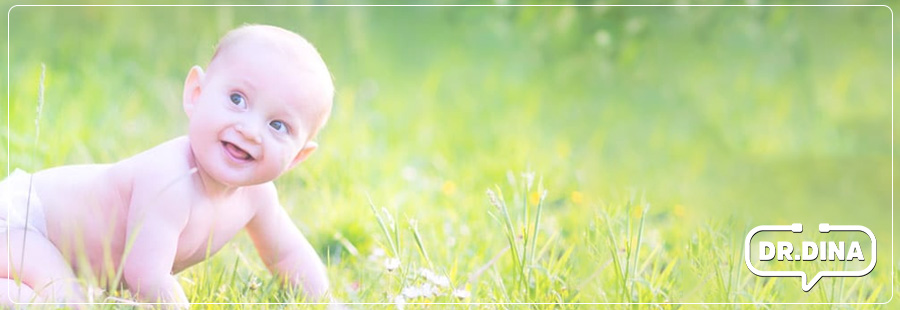Let’s talk about babies learning to crawl!
Watching your baby learning to crawl and moving around independently is always a memorable time. Baby crawling is one of the most important developmental milestones that your baby will reach early in his life. Seeing your baby growing and doing simple tasks from lifting their head to sitting up, all of these little achievements are heartwarming and exciting.
There are few sights more impressive than seeing your baby crawling for the very first time. It is like turning over a leaf in their development.
They are moving!
When do babies start to crawl?
One of the most common concerns we hear from parents is related to their baby’s crawling. I am asked daily when do babies start crawling? However, the response of the family doctor or a pediatrician can surprise many parents: especially when the answer to when do babies start crawling is, “it doesn’t matter, in some cases.” It doesn’t often matter when your baby starts crawling, as long as the other development skills are on track.

There is nothing to be worried about if your kid is not doing a classic or usual form of crawling.
Babies tend to begin crawling between six months and 9 months old, though some start to crawl earlier than that. Other babies skip crawling and start to pull to stand, cruise or walk before crawling. Overall, the average age of the crawling stage is between 7 and 11 months.
Some doctors suggest that if your child is ten months and hasn’t started crawling yet, it would be better to practice exercises to promote walking instead of crawling. Some kids go right to walking and skip crawling altogether.
Classic crawling, when children are up on all fours, propelling forward one limb at a time is unnecessary for every child, and it is not an essential part of baby development.
Types of baby crawling
There are several ways that babies learn to move around, and many babies crawl differently than you might expect. It is perfectly normal if your baby learns to crawl in their own way without using any of these methods.
Here are the most common baby crawling styles that you might experience in your kids:
1. Classic crawling
The baby will be up on their hands and knees, and crawling will be performed in a cross-body movement. One arm will be move forward at the same time as the opposite leg
2. Bum scoot
This type of baby crawling is based on one bent knee with one or two hands on the ground. The baby moves by pulling themselves forward with their upper body and scooting their rears behind.
3. Commando crawl
This is one of the most amazing crawling types. Many babies are fond of this. In commando crawling, both elbows are bent while the knees may or may not be bent as well. Baby will try to drag their belly on the floor to move around. Like a soldier would remain low to the ground. This is also commonly known as the army crawl or belly crawling.
4. Crab crawl
This is the most frustrating crawling type for babies. They move their arms to propel forward but end up going sideways or backward. They may not be moving forward, but they are still making progress in learning to crawl.
5. Bear walking
This crawling type is similar to classic crawling. However, babies prefer to keep their knees and elbows straight or extended to move forward. They move like a bear!
6. Rolling crawl
In rolling crawling, the baby will roll around to get where they want to go. It isn’t crawling per se but can be very efficient for some kids.
7. Insta walker
Some kids don’t crawl at all; they skip the crawling stage altogether and go straight to walking. Some parents experience their babies getting up and going directly to walking, out of nowhere!
Is it better for babies to crawl?
Crawling offers motor development advantages such as:
● Weight-bearing through hands
● Improved core strength
● Bilateral coordination
● Enhanced motor skills
However, if your baby does not want to crawl, don’t despair!
You can improve your baby’s core strength and reap all other benefits of crawling with exercise on a stability ball, wheelbarrow walking, and high kneeling. The important thing is that your baby’s muscles get the proper exercise
How to get your baby to crawl
Babies begin crawling at varying ages. You can encourage your baby to crawl in the following ways:
● Give your baby plenty of tummy time.
● Place your palms on the baby’s feet and let him or her try to push off your hand.
● Place your baby’s favorite toys some distance in front to encourage forward movement.
● Try to crawl your baby by pulling their weight forward while providing support to their chest.
Are you concerned about your baby’s crawling?
Do you have any concerns regarding your baby crawling? Discuss these concerns with your pediatrician or family doctor. Babies are energy efficient as they are preserving their additional energy towards different development aspects. Your child may learn to move differently than other babies if that is the most efficient way for them.

Babies prefer to use the path of least resistance. Baby will do what they find easier until they learn the next way to move; which is even easier. There are no other concerns for baby development; they don’t have to perform the classic baby crawl. When they can move from point A to B, they will identify their best option to get there.
If your baby has difficulty supporting their body weight or is moving in an asymmetric pattern, or if you have other concerns about your infants’ actions or movements, make sure to bring this to your doctor’s attention.
Key facts about baby crawling
When it comes to a baby crawling, here are some key facts to keep in mind:
● If the baby is not classic crawling, there is nothing to stress about, as long as the baby can get from point A to point B.
● Encourage activities like reaching, kneeling, tummy time, core stability exercise, wheelbarrow walking, and other movements to encourage the baby to develop locomotion strength and other motor skills.
● Babies develop at their own pace, and each child is different. Though there is a large range of normal, no two kids move in the same way or develop new skills exactly as another baby does. Don’t be discouraged if your child is not an early crawler. If you have concerns regarding your baby, please consult your healthcare provider.
● Babies need a safe space to learn to crawl in. Give your baby lots of space for crawling practice, making sure there are no sharp corners such as a coffee table where they can hit their head.
FAQ – Frequently Asked Questions
What Are the Different Types of Crawling styles?
When you imagine a baby crawling, you probably have a pretty clear image in your head. You picture a baby on all fours, arms and legs bent, scurrying across the floor by alternating arm and leg movements.
What I just described is the most common way a baby crawls. It’s not the only way babies get around, however. There are quite a few ways that babies crawl, some more common than others.
Next to the classic crawl, the other most common method is the belly crawl. Also known as the commando crawl (imagine a soldier in boot camp, dragging themselves beneath barbed wire), this is when babies remain flat on their stomachs and slide themselves across the floor. Often babies begin to transition from the belly crawl to the classic crawl before finally walking upright.
The rest of the crawling methods are far less common, but in no way are they abnormal or indications that anything is wrong. With the bear crawl, babies walk on all fours but don’t bend at the knee or the elbow, instead of keeping their limbs straight.
The leapfrog crawl is named as such because it resembles the way a frog moves. The baby makes a bridge with their arms and legs and then thrusts themselves forward.
The crab crawl is by far the least functional of the crawling styles. Instead of pulling forward with their arms, the baby pushes back, which propels them backward. It’s not an ideal way to travel!
The bottom scooter is exactly what it sounds like: the baby sits on their bottom, using their arms to drag themselves around.
Finally, there’s the roll. Most babies roll at some point or another, but some get so good at it that it overtakes crawling as their primary way of getting around.
When To Worry About Your Baby’s Crawling Style
In most cases, you don’t need to worry about how your baby crawls, as long as they find a way to get around. Some babies don’t crawl at all and simply go straight to walking. The only time you should be concerned and talk to your baby’s doctor is if your child is having difficulty moving, such as not going in the direction that they want to go in. Another red flag might be your baby having trouble supporting themselves while trying to crawl.
What Is a Cross Crawl?
The cross crawl is similar to the classic crawl in that the baby crawls on their hands and knees and alternates between their arms and legs, moving their left arm with their right leg and vice versa. However, with the cross crawl, the baby moves their limbs to the opposite side of their body with each movement.
Cross crawling is an essential step in a baby’s development because it stimulates the nerve fibers that cross between the two halves of the brain, and it does so in a balanced way. It requires coordination of the hands and feet and the eyes, ears, and core muscles.
#YOUGOTTHIS













